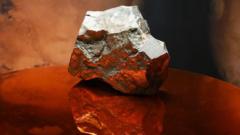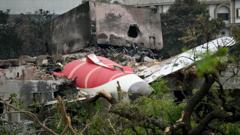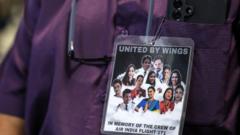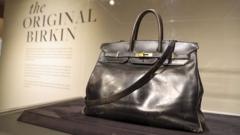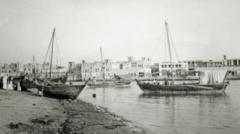The upcoming auction of a unique oil portrait of Mahatma Gandhi, painted during his visit to London for the Round Table Conference in 1931, showcases a remarkable piece of art history. The painting, deemed to be the only oil portrait that Gandhi sat for, has connections to his efforts for India's independence and raises questions about past controversies surrounding his legacy.
Historic Oil Portrait of Mahatma Gandhi to Be Auctioned in London
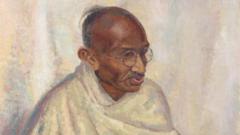
Historic Oil Portrait of Mahatma Gandhi to Be Auctioned in London
A rare 1931 oil painting of Mahatma Gandhi, created by British artist Clare Leighton, is set for auction at Bonhams, London, revealing a significant cultural legacy.
A rare oil portrait of Mahatma Gandhi, created by British artist Clare Leighton in 1931, is slated to be auctioned next month in London. The portrait, painted during Gandhi's visit to England for the second Round Table Conference aimed at discussing constitutional reforms and self-governance for India, holds substantial historical value. Gandhi is widely revered in India as the "father of the nation" for his role in leading a non-violent resistance against British colonial rule, and his teachings continue to influence millions globally.
The auction house Bonhams indicates that this painting may be the only oil portrait for which Gandhi personally posed. Clare Leighton had privileged access to Gandhi, purportedly meeting him multiple times to capture his likeness. "This is a painting of unique historic and cultural significance," commented Caspar Leighton, Clare’s great-nephew, emphasizing the desire for broader appreciation of the work.
Leighton was introduced to Gandhi by her partner, British journalist Henry Noel Brailsford, a staunch supporter of India's push for independence. The artist exhibited her portraits, including the now-auctioned piece, at the Albany Galleries in London in November 1931. Despite Gandhi not attending the opening, several prominent members of the Indian delegation were present, including esteemed independence leader Sarojini Naidu.
British journalist Winifred Holtby described the portrait, depicting a bare-headed Gandhi, as capturing both his demeanor and essence during pivotal moments of his leadership. After Leighton's death in 1989, the portrait remained in her family until its upcoming auction.
There is limited public record of the painting being displayed after its initial exhibition, though it was showcased at an event organized by the Boston Public Library in 1978. Reports also suggest that the portrait may have been damaged due to a knife attack in the 1970s, allegedly perpetrated by a right-wing Hindu activist. This violence stemmed from ongoing contempt towards Gandhi among hardliners who blame him for perceived favoritism towards Muslims during India's tumultuous partition in 1947, which ultimately resulted in his assassination by Nathuram Godse in 1948.
The oil portrait, labeled restored in 1974 at a Connecticut conservation lab, offers a chance to reflect on the complex legacy of Gandhi, as this historical artwork transitions into a new chapter, awaiting its fate in the competitive world of art auctions.

